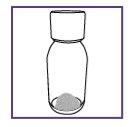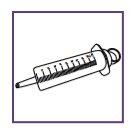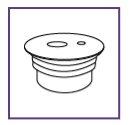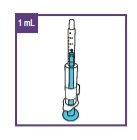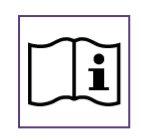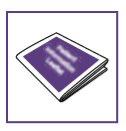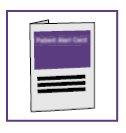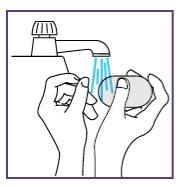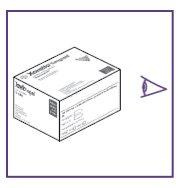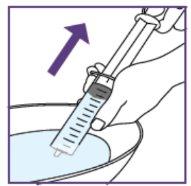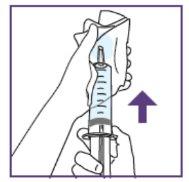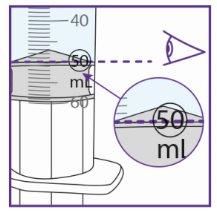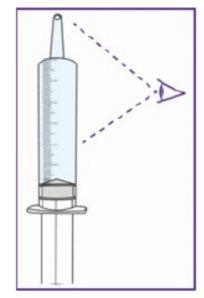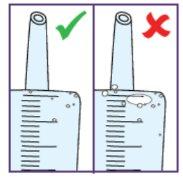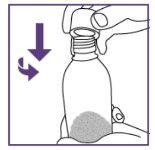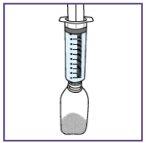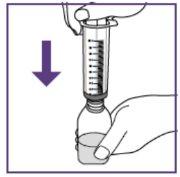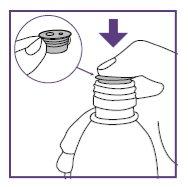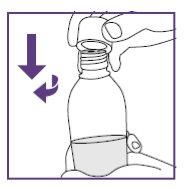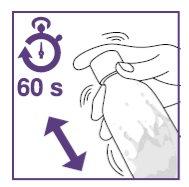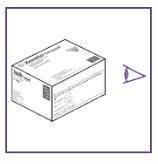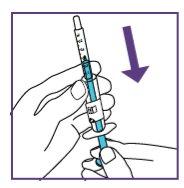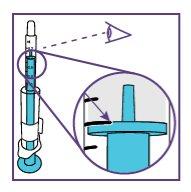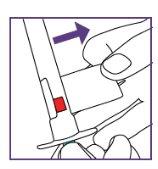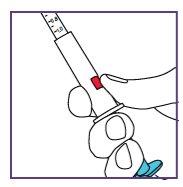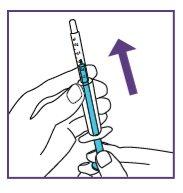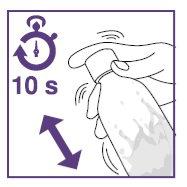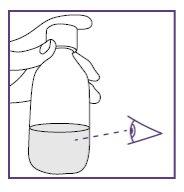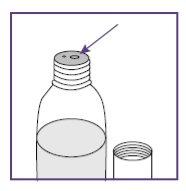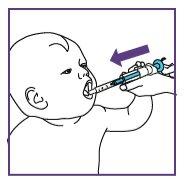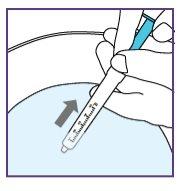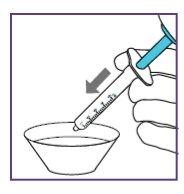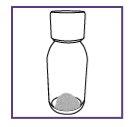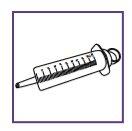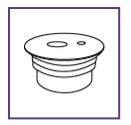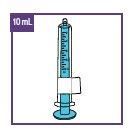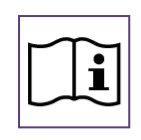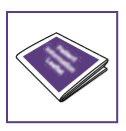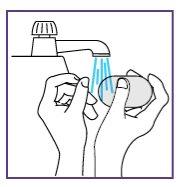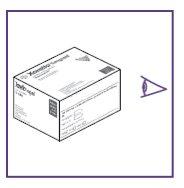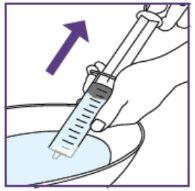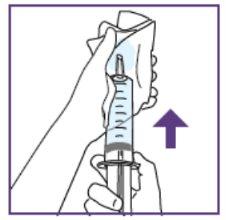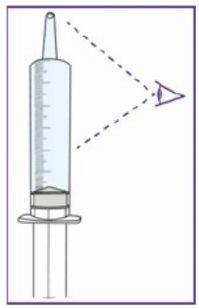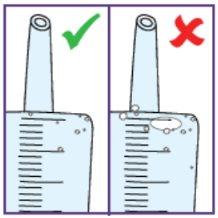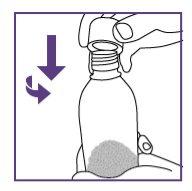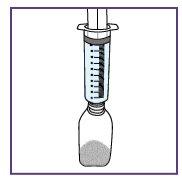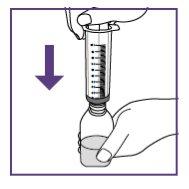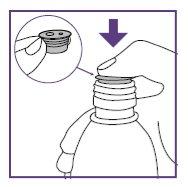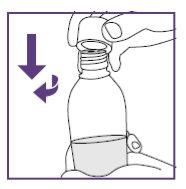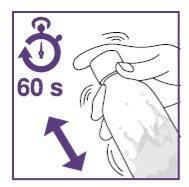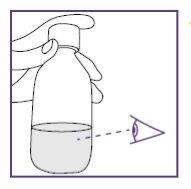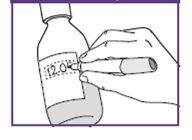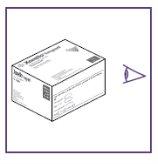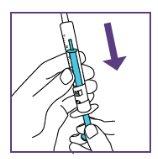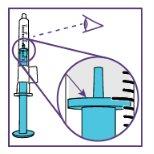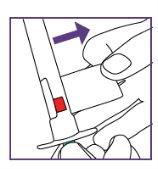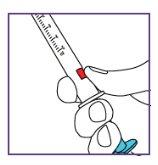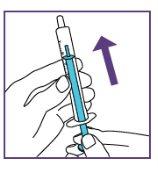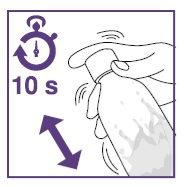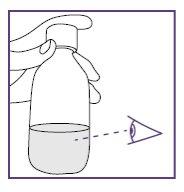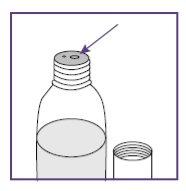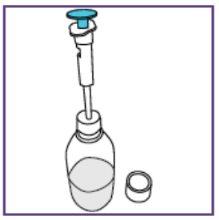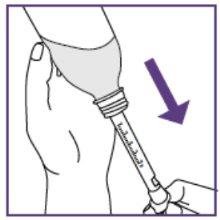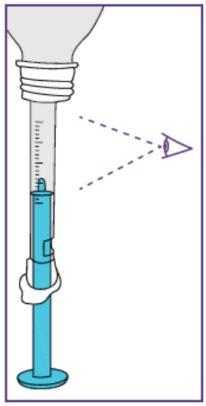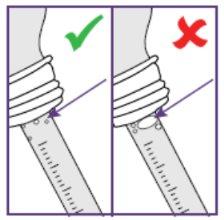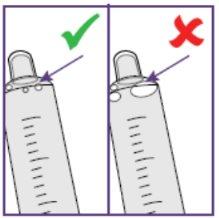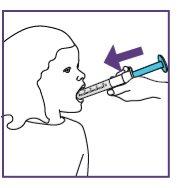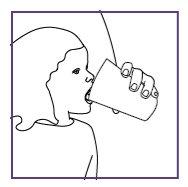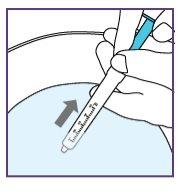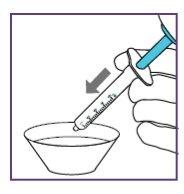
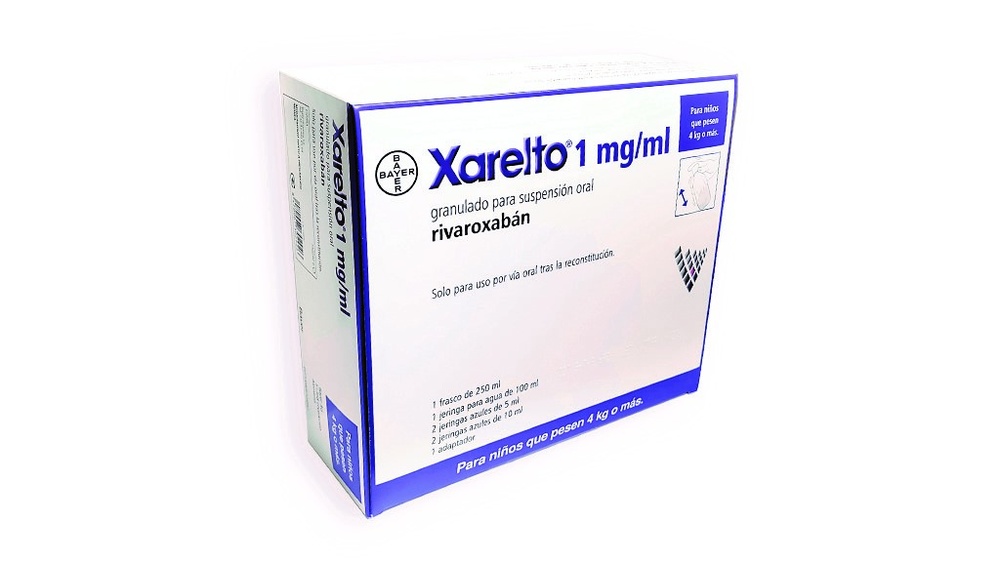
КСАРЕЛТО 1 мг/мл ГРАНУЛЯТ ДЛЯ ПРИГОТОВЛЕНИЯ ОРАЛЬНОГО РАСТВОРА

Спросите врача о рецепте на КСАРЕЛТО 1 мг/мл ГРАНУЛЯТ ДЛЯ ПРИГОТОВЛЕНИЯ ОРАЛЬНОГО РАСТВОРА

Инструкция по применению КСАРЕЛТО 1 мг/мл ГРАНУЛЯТ ДЛЯ ПРИГОТОВЛЕНИЯ ОРАЛЬНОГО РАСТВОРА
Введение
Инструкция: информация для пользователя
Харелто 1мг/мл гранулы для перорального суспензии
ривароксабан
Прочитайте внимательно всю инструкцию перед началом приема этого препарата, поскольку она содержит важную информацию. Эта инструкция написана для пациента («вы») и для родителя или опекуна, который будет давать этот препарат ребенку.
- Сохраните эту инструкцию, поскольку вам может потребоваться перечитать ее.
- Если у вас есть какие-либо вопросы, проконсультируйтесь с вашим врачом или фармацевтом.
- Этот препарат назначен только вам или ребенку, и не следует давать его другим людям, даже если у них相同ные симптомы, поскольку это может нанести им вред.
- Если вы или ребенок испытываете побочные эффекты, проконсультируйтесь с вашим врачом или фармацевтом, даже если это побочные эффекты, которые не указаны в этой инструкции. См. раздел 4.
Содержание инструкции
- Что такое Харелто и для чего он используется
- Что необходимо знать перед началом приема или введения Харелто
- Как принимать или вводить Харелто
- Возможные побочные эффекты
- Хранение Харелто
- Содержание упаковки и дополнительная информация
1. Что такое Харелто и для чего он используется
Харелто содержит активное вещество ривароксабан.
Харелто относится к группе препаратов, называемых антитромботическими средствами. Он действует путем блокирования фактора свертывания крови (фактора Xa) и, таким образом, снижает склонность крови к образованию тромбов.
Харелто используется у новорожденных, грудных детей, детей и подростков в возрасте до 18 лет для:
- лечения тромбов и предотвращения повторного образования тромбов в венах или кровеносных сосудах легких после первоначального лечения не менее 5 дней препаратами, вводимыми инъекционно для лечения тромбов.
Прочитайте и следуйте инструкциям по применению, которые поставляются с этим препаратом, поскольку они покажут вам, как приготовить и принимать или вводить пероральный суспензии Харелто.
2. Что необходимо знать перед началом приема или введения Харелто
Не принимайте и не вводите Харелто, если выили ребенок
- аллергичны к ривароксабану или любому другому компоненту этого препарата (перечисленному в разделе 6)
- чрезмерно кровоточите
- страдаете заболеванием или проблемами в органе, которые увеличивают риск тяжелого кровотечения (например, язва желудка, повреждение или кровоизлияние в мозге или недавняя операция на мозге или глазах)
- принимаете препараты для предотвращения образования тромбов в крови (например, варфарин, дабигатран, апиксабан или гепарин), за исключением
- когда вы меняете препарат для предотвращения образования тромбов в крови или
- пока вам вводится гепарин через вену или артерию, чтобы предотвратить закупорку
- страдаете заболеванием печени, связанным с повышенным риском кровотечения
- беременны или кормите грудью.
Не принимайте и не вводите Харелто и сообщите вашему врачу, если любая из этих ситуаций применяется к вам или ребенку.
Предостережения и меры предосторожности
Проконсультируйтесь с вашим врачом или фармацевтом перед началом использования Харелто, если:
- у вас или ребенка повышенный риск кровотечения. Это может произойти в следующих ситуациях:
- умеренная или тяжелая почечная недостаточность, поскольку функция почек может повлиять на количество препарата, действующего в организме
- если вы или ребенок принимаете другие препараты для предотвращения образования тромбов в крови (например, варфарин, дабигатран, апиксабан или гепарин), если они абсолютно необходимы (см. раздел «Не принимайте и не вводите Харелто»)
- геморрагическая болезнь
- очень высокое артериальное давление, не контролируемое медицинским лечением
- заболевания желудка или кишечника, которые могут вызвать кровотечение, такие как воспаление кишечника или желудка, воспаление пищевода из-за заболевания, при котором желудочная кислота поднимается вверх в пищевод, или опухоли, расположенные в желудке, кишечнике, генитальной или мочевой системе
- проблема с кровеносными сосудами в задней части глаз (ретинопатия)
- легочная болезнь, при которой бронхи расширены и наполнены гноем (бронхоэктазия) или ранее имевшееся легочное кровотечение
- у вас или ребенка есть протез клапана сердца
- у вас или ребенка есть заболевание, называемое антифосфолипидным синдромом (нарушение иммунной системы, которое увеличивает риск образования тромбов в крови)
- у вас или ребенка нестабильное артериальное давление
- у вас или ребенка запланировано другое лечение или хирургическая операция для удаления тромба из легких
Сообщите вашему врачу, если вы или ребенок испытываете любую из этих ситуаций перед приемом или введением Харелто. Врач решит, должен ли вы или ребенок быть лечены этим препаратом и находиться под более пристальным наблюдением.
Не вводитеХарелто детям младше 6 месяцев, которые
- родились до 37 недели беременности, или
- весят менее 2,6 кг, или
- получали грудное молоко или смесь менее 10 дней
В этих случаях дозировку Харелто нельзя определить надежно, и она не была изучена у этих детей.
Если вы или ребенок нуждаетесь в хирургической операции
- Очень важно принимать или вводить Харелто до и после операции, точно в часы, которые указал ваш врач.
- Если операция требует установки катетера или инъекции в позвоночный столб (например, для эпидуральной или спинальной анестезии или обезболивания):
- очень важно принимать или вводить Харелто до и после инъекции или удаления катетера, точно в часы, которые указал ваш врач.
- сообщите вашему врачу немедленно, если вы или ребенок испытываете онемение или слабость в ногах или проблемы с кишечником или мочевым пузырем после анестезии. В этом случае требуется срочная помощь.
Дети и подростки
Пероральный суспензии Харелто следует использовать у пациентов младше 18 лет для лечения тромбов и предотвращения повторного образования тромбов в венах или кровеносных сосудах легких. Не достаточно информации о его использовании у детей и подростков для других показаний.
Другие препараты и Харелто
Сообщите вашему врачу или фармацевту, если вы или ребенок используете, недавно использовали или можете использовать любой другой препарат, включая те, которые можно купить без рецепта.
- Если вы или ребенок принимаете:
- препарат для лечения грибковой инфекции (например, флуконазол, итраконазол, вориконазол, позаконазол), за исключением случаев, когда они применяются только на коже
- таблетки с кетоконазолом (используются для лечения синдрома Кушинга, при котором организм производит избыточное количество кортизола)
- препарат для лечения бактериальных инфекций (например, кларитромицин, эритромицин)
- препарат для лечения ВИЧ/СПИДа (например, ритонавир)
- другие препараты для снижения свертываемости крови (например, эноксапарин, клопидогрел или антагонисты витамина К, такие как варфарин или аценокумарол)
- препараты для облегчения воспаления и боли (например, напроксен или ацетилсалициловая кислота)
- дронедарон, препарат для лечения нерегулярного сердечного ритма
- некоторые препараты для лечения депрессии (селективные ингибиторы обратного захвата серотонина (СИОЗС) или ингибиторы обратного захвата серотонина и норэпинефрина (ИОЗС))
Если любая из этих ситуаций применяется к вам или ребенку, сообщите вашему врачуперед приемом или введением Харелто, поскольку эффект Харелто может быть усилен. Врач решит, должен ли вы или ребенок быть лечены этим препаратом и находиться под более пристальным наблюдением.
Если врач считает, что вы или ребенок имеет более высокий риск развития язвы желудка или кишечника, может быть необходимо профилактическое лечение.
- Если вы или ребенок принимаете:
- препарат для лечения эпилепсии(фенитоин, карбамазепин, фенобарбитал)
- растение св. Иоанна (Hypericum perforatum),растительный препарат для лечения депрессии
- рифампицин,антибиотик.
Если любая из этих ситуаций применяется к вам или ребенку, сообщите вашему врачуперед приемом или введением Харелто, поскольку эффект Харелто может быть снижен. Врач решит, должен ли вы или ребенок быть лечены этим препаратом и находиться под более пристальным наблюдением.
Беременность и лактация
- Если вы или подросток беременны или кормите грудью, не принимайте и не вводите Харелто.
- Если есть возможностьтого, что вы или подросток станете беременной, следует использовать надежный контрацептивво время приема Харелто.
- Если вы или подросток становитесь беременной во время приема этого препарата, сообщите вашему врачу немедленно, который решит, как следует продолжить лечение.
Вождение и использование машин
Харелто может вызывать головокружение или обморок. Вы или ребенок не должны водить, ездить на велосипеде или использовать инструменты или машины, если испытываете эти симптомы.
Харелто содержит бензоат натрия и натрий
Этот препарат содержит 1,8 мг бензоата натрия (Е 211) в каждом мл перорального суспензии. Бензоат натрия (Е 211) может увеличить риск желтухи (желтой окраски кожи и глаз) у новорожденных (до 4 недель жизни).
Этот препарат содержит менее 1 ммоль натрия (23 мг) на мл; это означает, что он практически «не содержит натрия».
3. Как принимать или вводить Харелто
Следуйте точно инструкциям по применению этого препарата, указанным вашим врачом для вас или ребенка. В случае сомнений проконсультируйтесь с вашим врачом или фармацевтом.
Убедитесь, что правильная информация о том, сколько и как часто принимать или вводить Харелто, написана в специальной области упаковки. Если это не так, попросите вашего фармацевта или врача предоставить вам соответствующую информацию.
Инструкции по применению
Чтобы узнать, как приготовить и принимать или вводить пероральный суспензии Харелто:
- Прочитайте листок инструкций по применению, который входит в упаковку, и
- Посмотрите образовательное видео, доступное через QR-код, указанный на карте информации для пациента, поставляемой с этим препаратом.
Как принимать или вводить
Принимайте или вводите Харелто пероральный суспензии с пищей (грудным молоком или смесью) или с едой. Каждую дозу Харелто следует проглотить вместе с нормальным количеством жидкости (например, 20 мл у детей от 6 месяцев до 240 мл у подростков). Это нормальное количество может включать обычное количество напитка, используемого для кормления (например, грудное молоко, детская смесь, питательный напиток).
Ваш врач также может вводить пероральный суспензии через зонд, введенный в желудок.
Какую дозу принимать или вводить
Доза Харелто зависит от веса пациента. Врач рассчитает ее как количество (объем) в мл перорального суспензии. Это должно быть измерено с помощью синей шприца (1 мл, 5 мл или 10 мл, см. таблицу 1), который поставляется с этим препаратом. Ваш врач назначит необходимый объем, включая конкретный шприц, который следует использовать.
Ваш врач скажет вам, какую дозу перорального суспензии следует принимать вам или ребенку.
Ниже представлена таблица, которую будет использовать ваш врач. Не корректируйте дозу самостоятельно.
Все материалы для приготовления и введения перорального суспензии поставляются с препаратом (за исключением питьевой воды). Используйте только воду без газа, чтобы избежать пузырьков. Используйте только поставляемый шприц, чтобы вводить Харелто, чтобы обеспечить точную дозировку. Не используйте никакой другой метод для введения раствора, такой как альтернативный шприц, ложка и т. д.
Поскольку доза Харелто основана на весе, важно посещать запланированные встречи с врачом, поскольку может потребоваться корректировка дозы по мере изменения веса, особенно у детей весом менее 12 кг. Это гарантирует, что ребенок получает правильную дозу Харелто.
Таблица1: Рекомендуемая доза Харелто у детей
Вес тела [кг] | Индивидуальная доза* | Ежедневная частота приема | Общая ежедневная доза* | Подходящий синий шприц |
2,6 до менее 3 | 0,8 мл | 3 раза | 2,4 мл | 1 мл |
3 до менее 4 | 0,9 мл | 2,7 мл | ||
4 до менее 5 | 1,4 мл | 4,2 мл | 5 мл | |
5 до менее 7 | 1,6 мл | 4,8 мл | ||
7 до менее 8 | 1,8 мл | 5,4 мл | ||
8 до менее 9 | 2,4 мл | 7,2 мл | ||
9 до менее 10 | 2,8 мл | 8,4 мл | ||
10 до менее 12 | 3,0 мл | 9,0 мл | ||
12 до менее 30 | 5,0 мл | 2 раза | 10,0 мл | 5 мл или 10 мл |
30 до менее 50 | 15,0 мл | 1 раз | 15,0 мл | 10 мл |
50 или более | 20,0 мл | 20,0 мл | ||
|
Ваш врач также может назначить вам таблетки, если вы или ребенок способны проглотить таблетку и весите не менее 30 кг.
Когда принимать или вводить Харелто
Принимайте или вводите пероральный суспензии как указано каждый день, пока врач не скажет вам прекратить.
Принимайте или вводите пероральный суспензии в одно и то же время каждый день, чтобы помочь вам запомнить. Рассмотрите возможность установки сигнала, чтобы напомнить вам.
Пожалуйста, наблюдайте за ребенком, чтобы убедиться, что он принимает всю дозу.
Если врач указал вам принимать или вводить дозу Харелто:
- один раз в день, делайте это с интервалом примерно 24 часа
- два раза в день, делайте это с интервалом примерно 12 часов
- три раза в день, делайте это с интервалом примерно 8 часов
Ваш врач решит, как долго вы или ребенок должны продолжать лечение.
Если вы или ребенок срыгиваете дозу или рвете
- менее 30 минут после приема Харелто, примите или введите новую дозу.
- более 30 минут после приема Харелто, непринимайте или вводите новую дозу. Продолжайте принимать или вводить следующую дозу Харелто в следующее запланированное время.
Позвоните вашему врачу, если вы или ребенок срыгиваете или рвете повторно после приема Харелто.
Если вы пропустили прием или введение Харелто
- Если вы принимаете или вводите Харелто один раз в день, примите или введите пропущенную дозу Харелто как можно скорее в тот же день. Если это невозможно, пропустите эту дозу. Затем примите или введите следующую дозу Харелто на следующий день. Не принимайте или вводите более одной дозы в день.
- Если вы принимаете или вводите Харелто два раза в день:
- Пропущенная утренняя доза: примите или введите пропущенную дозу как можно скорее. Вы можете принять или ввести ее вместе с вечерней дозой.
- Пропущенная вечерняя доза: можно принять или ввести пропущенную дозу только в ту же ночь. Не принимайте или вводите две дозы на следующее утро.
- Если вы принимаете или вводите Харелто три раза в день, не замените пропущенную дозу. Продолжайте с следующей запланированной дозой (каждые 8 часов).
На следующий день после пропущенной дозы продолжайте как указано врачом один, два или три раза в день.
Если вы приняли или ввели слишком много Харелто
Немедленно позвоните вашему врачу, если вы приняли или ввели слишком много перорального суспензии Харелто. Принятие или введение слишком большого количества Харелто увеличивает риск кровотечения.
Если вы прекратили лечение Харелто
Не прекращайте лечение Харелто без предварительной консультации с вашим врачом, поскольку Харелто лечит и предотвращает серьезные заболевания.
Если у вас есть какие-либо другие вопросы о использовании этого препарата, проконсультируйтесь с вашим врачом или фармацевтом.
4. Возможные побочные эффекты
Как и все лекарства, это лекарство может вызывать побочные эффекты, хотя не все люди их испытывают.
Как и другие подобные лекарства для снижения образования кровяных сгустков, Ксарелто может вызывать кровотечения, которые могут представлять угрозу для жизни пациента. Чрезмерное кровотечение может привести к внезапному падению артериального давления (шок). В некоторых случаях кровотечение может быть неочевидным.
Немедленно сообщите врачу, если вы или ребенок испытываете любой из следующих побочных эффектов:
- Признаки кровотечения
- кровотечение в мозге или внутри черепа (симптомы могут включать головную боль, слабость на одной стороне тела, рвоту, судороги, снижение уровня сознания и жесткость шеи. Это серьезная медицинская чрезвычайная ситуация. Немедленно обратитесь к врачу!)
- продолжительное или чрезмерное кровотечение
- исключительная слабость, усталость, бледность, головокружение, головная боль, необъяснимая отечность, затруднение дыхания, боль в груди или стенокардия
Ваш врач может решить держать вас или ребенка под более пристальным наблюдением или изменить лечение.
- Признаки тяжелых реакций на коже
- интенсивные кожные высыпания, которые распространяются, пузыри или поражения слизистых оболочек, например, во рту или глазах (синдром Стивенса-Джонсона/токсический эпидермальный некролиз)
- реакция на лекарство, вызывающая высыпание, лихорадку, воспаление внутренних органов, аномалии крови и системное заболевание (синдром DRESS).
Частота этих побочных эффектов очень низка (до 1 из 10 000 человек).
- Признаки тяжелых аллергических реакций
- отек лица, губ, рта, языка или горла; затруднение глотания; крапивница и затруднение дыхания; внезапное падение артериального давления.
Частота тяжелых аллергических реакций очень низка (анafilактические реакции, включая анафилактический шок; могут поражать до 1 из 10 000 человек) и низка (ангиоэдем и аллергический отек; могут поражать до 1 из 100 человек).
Общий список возможных побочных эффектов, обнаруженных у взрослых и детей и подростков:
Частые(могут поражать до 1 из 10 человек)
- снижение количества красных кровяных телец, которое может вызвать бледность и слабость или затруднение дыхания
- кровотечение из желудка или кишечника, урогенитальное кровотечение (включая кровь в моче и обильное менструальное кровотечение), носовое кровотечение, кровотечение десен
- кровотечение в глазу (включая кровотечение в белой части глаза)
- кровотечение в ткань или полость организма (гематома, синяки)
- кашель с кровью
- кровотечение из кожи или под кожей
- кровотечение после операции
- гнойное выделение из хирургической раны
- отек конечностей
- боль в конечностях
- нарушение функции почек (может быть видно в анализах, проведенных врачом)
- лихорадка
- боль в желудке, диспепсия, головокружение или чувство головокружения, запор, диарея
- понижение артериального давления (симптомы могут быть чувством головокружения или обморока при стоянии)
- общее снижение силы и энергии (слабость, усталость), головная боль, головокружение,
- сыпь, зуд кожи
- анализы крови могут показать увеличение некоторых печеночных ферментов
Нечастые(могут поражать до 1 из 100 человек)
- кровотечение в мозге или внутри черепа (см. выше, возможные побочные эффекты, которые могут быть признаком кровотечения)
- кровотечение в суставе, которое вызывает боль и отек.
- тромбоцитопения (низкое количество тромбоцитов, клеток, помогающих свертыванию крови)
- аллергическая реакция, включая аллергическую реакцию кожи
- нарушение функции печени (может быть видно в анализах, проведенных врачом)
- анализы крови могут показать увеличение билирубина, некоторых панкреатических или печеночных ферментов, или количества тромбоцитов
- обморок
- чувство дискомфорта
- увеличение частоты сердечных сокращений
- сухость во рту
- крапивница
Редкие(могут поражать до 1 из 1 000 человек)
- кровотечение в мышцу
- холестаз (снижение потока желчи), гепатит, включая травматическое повреждение печеночных клеток (воспаление или повреждение печени), желтуха кожи и глаз (желтуха)
- локализованный отек
- накопление крови (гематома) в паху после осложнения кардиохирургической операции, при которой в артерию ноги вводится катетер (псевдоаневризма)
Очень редкие(могут поражать до 1 из 10 000 человек)
- накопление эозинофилов, типа белых кровяных телец гранулоцитов, вызывающих воспаление в легких (эозинофильная пневмония).
Частота не известна(частота не может быть оценена на основе доступных данных)
- почечная недостаточность после тяжелого кровотечения
- кровотечение в почке, иногда с присутствием крови в моче, что приводит к неспособности почек функционировать правильно (нефропатия, связанная с антикоагулянтами)
- увеличение давления в мышцах ног или рук после кровотечения, что вызывает боль, отек, нарушение чувствительности, онемение или паралич (синдром отсека после кровотечения)
Побочные эффекты у детей и подростков
В целом, побочные эффекты, наблюдаемые у детей и подростков, леченных Ксарелто, были аналогичны тем, которые наблюдались у взрослых, и их тяжесть была в основном легкой или умеренной.
Побочные эффекты, которые чаще всего наблюдались у детей и подростков:
Очень частые(могут поражать более 1 из 10 человек)
- головная боль
- лихорадка
- носное кровотечение
- рвота
Частые(могут поражать до 1 из 10 человек)
- ускорение сердечных сокращений
- анализы крови могут показать увеличение билирубина (пигмента желчи)
- тромбоцитопения (низкое количество тромбоцитов, клеток, помогающих свертыванию крови)
- обильное менструальное кровотечение
Нечастые(могут поражать до 1 из 100 человек)
- анализы крови могут показать увеличение одной из подгрупп билирубина (прямой билирубин, пигмент желчи)
Сообщение о побочных эффектах
Если вы или ребенок испытываете любой побочный эффект, проконсультируйтесь с врачом или фармацевтом, даже если это возможные побочные эффекты, которые не перечислены в этом описании. Вы также можете сообщить об этом напрямую через национальную систему уведомления, включенную в Приложение V. Сообщая о побочных эффектах, вы можете способствовать предоставлению более полной информации о безопасности этого лекарства.
5. Хранение Ксарелто
Храните это лекарство в недоступном для детей месте.
Не используйте это лекарство после даты истечения срока годности, указанной на упаковке и на флаконе после «CAD» или «EXP».
Дата истечения срока годности - последний день месяца, указанного.
После приготовления срок годности суспензии составляет 14 дней при комнатной температуре.
Не храните при температуре выше 30°C.
Не замораживайте. Храните приготовленную суспензию в вертикальном положении.
Лекарства не должны выбрасываться в канализацию или в мусор. Спросите у фармацевта, как утилизировать упаковку и лекарства, которые вам больше не нужны. Таким образом, вы будете способствовать защите окружающей среды.
6. Содержимое упаковки и дополнительная информация
Состав Харелто
- Активное вещество - ривароксабан. Стеклянный флакон содержит
- 51,7 мг ривароксабана для добавления 50 мл воды,
- или 103,4 мг ривароксабана для добавления 100 мл воды.
После приготовления каждая мл пероральной суспензии содержит 1 мг ривароксабана.
- Другие компоненты:
- Лимонная кислота, безводная (Е 330), гипромеллоза (2910), маннитол (Е 421), микрокристаллическая целлюлоза, карбоксиметилцеллюлоза натрия, бензоат натрия (Е 211) (см. раздел 2 «Харелто содержит бензоат натрия и натрий»), сукралоза (Е 955), ксантановая камедь (Е 415), сладкий и кремовый вкус (состоящий из ароматизаторов, мальтодекстрина [кукурузы], пропиленгликоля [Е 1520] и акациевой камеди [Е 414]).
Внешний вид продукта и содержимое упаковки
Харелто гранулы для пероральной суспензии - белые гранулы в стеклянном флаконе с крышкой, защищенной от детей.
Размеры упаковок
- Для детей, вес которых меньше 4кг:
Складная коробка со стеклянным флаконом коричневого цвета, содержащим 2,625 г гранул (что эквивалентно 51,7 мг ривароксабана), двумя синими шприцами по 1 мл, шприцем для воды на 50 мл и адаптером.
- Для детей, вес которых 4кг или более:
Складная коробка со стеклянным флаконом коричневого цвета, содержащим 5,25 г гранул (что эквивалентно 103,4 мг ривароксабана), двумя синими шприцами по 5 мл и двумя синими шприцами по 10 мл, шприцем для воды на 100 мл и адаптером.
Возможно, не все размеры упаковок будут продаваться.
Объем и частота дозы, скорректированные в зависимости от индивидуального веса, должны быть указаны врачом. Они должны быть написаны на внешней коробке при предоставлении родителям, опекунам или пациентам.
Внимательно следуйте инструкциям по применению, которые поставляются с каждой упаковкой.
Посмотрите образовательное видео, доступное через QR-код на карте информации для пациента, поставляемой с препаратом.
Владелец разрешения на маркетинг и ответственный за производство
Bayer AG
51368 Леверкузен
Германия
Для получения дополнительной информации о препарате можно обратиться к местному представителю владельца разрешения на маркетинг:
Бельгия / Бельгique / Belgien Bayer SA-NV Тел: +32-(0)2-535 63 11 | Литва UAB Bayer Тел: +370-5-233 68 68 |
| Люксембург / Люксбург Bayer SA-NV Тел: +32-(0)2-535 63 11 |
Чешская Республика Bayer s.r.o. Тел: +420-266 101 111 | Венгрия Bayer Hungária KFT Тел: +36-1-487 4100 |
Дания Bayer A/S Тел: +45-45 235 000 | Мальта Alfred Gera and Sons Ltd. Тел: +356-21 44 62 05 |
Германия Bayer Vital GmbH Тел: +49-(0)214-30 513 48 | Нидерланды Bayer B.V. Тел: +31–(0)297-28 06 66 |
Эстония Bayer OÜ Тел: +372-655 85 65 | Норвегия Bayer AS Тел: +47-23 13 05 00 |
Греция Bayer Ελλάς ΑΒΕΕ Тел: +30-210-618 75 00 | Австрия Bayer Austria Ges. m. b. H. Тел: +43-(0)1-711 460 |
Испания Bayer Hispania S.L. Тел: +34-93-495 65 00 | Польша Bayer Sp. z o.o. Тел: +48-22-572 35 00 |
Франция Bayer HealthCare Тел (номер зеленой линии): +33-(0) 800 87 54 54 | Португалия Bayer Portugal, Lda. Тел: +351-21-416 42 00 |
Хорватия Bayer d.o.o. Тел: + 385-(0)1-6599 900 | Румыния SC Bayer SRL Тел: +40-(0)21-528 59 00 |
Ирландия Bayer Limited Тел: +353 1 216 3300 | Словения Bayer d. o. o. Тел: +386-(0)1-58 14 400 |
Исландия Icepharma hf. Тел: +354-540 80 00 | Словакия Bayer, spol. s r.o. Тел: +421-(0)2-59 21 31 11 |
Италия Bayer S.p.A. Тел: +39-02-3978 1 | Финляндия Bayer Oy Тел: +358-(0)20-78521 |
Кипр NOVAGEM Limited Тел: +357-22-48 38 58 | Швеция Bayer AB Тел: +46-(0)8-580 223 00 |
Латвия SIA Bayer Тел: +371-67 84 55 63 | Великобритания Bayer plc Тел: +44-(0)118 206 3000 |
Дата последнего пересмотра этого листка:
Подробная информация о препарате доступна на сайте Европейского агентства по лекарственным средствам http://www.ema.europa.eu.
Инструкции по применению (ИП)
Инструкции по применению
Харелто 1мг/мл
Флакон 100мл с 2,625г гранул для приготовления пероральной суспензии
Фармацевтически активное вещество: ривароксабан
Подготовка и введение пероральной суспензии (смесь гранул и воды)
Глоссарий и символы
- Гранулы: порошок (поставляется во флаконе) содержащий фармацевтически активное вещество.
- Шприц для воды: шприц на 50 мл, используемый для измерения и добавления 50 мл воды во флакон с гранулами Харелто.
- Суспензия: смесь гранул и воды (для перорального применения).
- Синий шприц: шприц с синим поршнем для извлечения и перорального введения Харелто.
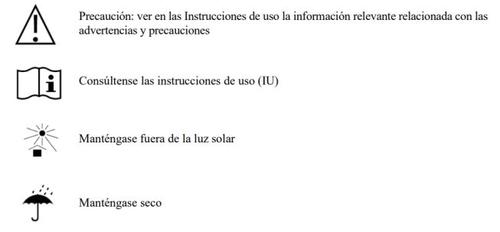

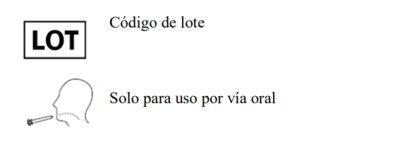
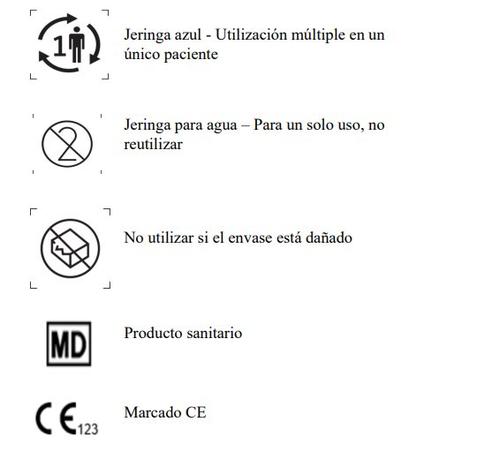
Прежде чем начать
- Внимательно прочитайте все разделы этих инструкций по применению перед первым использованием Харелто и перед каждым введением дозы.
- Посмотрите образовательное видео, доступное через QR-код на карте информации для пациента, поставляемой с препаратом.
- Убедитесь, что вы понимаете инструкции перед началом. Если нет, позвоните своему врачу.
- Для получения дополнительной информации о Харелто обратитесь к листку-вкладышу.
Содержимое упаковки
Каждая коробка Харелто содержит следующие компоненты:
| 1флакон с крышкой, защищенной от детей, содержащий гранулы Харелто |
| 1шприц для воды на 50мл в упаковке(для одноразового использования) |
| 1адаптер для флакона в упаковке |
| 2синих шприца по 1мл в упаковке |
| 1копия инструкций по применению (ИП)(этот документ) |
| 1листок-вкладыш Содержит важную информацию о Харелто. |
| 1карта информации для пациента Важная информация в случае чрезвычайной ситуации. Пациент должен носить ее с собой и предъявлять ее каждому врачу или дантисту перед лечением. |

Предостережения и меры предосторожности
- Используйте толькопитьевую воду без газа для приготовления суспензии, чтобы избежать образования пузырьков. Это означает, что можно использовать
- воду из крана или
- негазированную минеральную воду (без газа)
- Очень важно добавить точное количество воды в гранулы флакона, чтобы обеспечить правильную концентрацию Харелто.
- Используйте шприц для воды, чтобы измерить 50 мл воды, см. ниже для более подробной информации.
- Очень осторожно измерьте количество воды, которое будет добавлено во флакон.
- После приготовления суспензия может быть использована в течение 14 дней, если она хранится при комнатной температуре. Убедитесь, что вы написали дату истечения срока годности суспензии (дата приготовления плюс 14 дней) в поле для этого на этикетке флакона.
- Нехраните суспензию при температуре выше 30°C. Незамораживайте. Если суспензия была хранена в холодильнике, дайте ей достичь комнатной температуры перед извлечением соответствующей дозы.
- Встряхните суспензию для первоначальной подготовки в течение как минимум 60секунд.
- Встряхните суспензию во флаконе в течение как минимум 10секундперед каждым введением.
- Очень важно, чтобы была введена указанная врачом доза Харелто.
- Убедитесь, что знаете назначенную дозу и частоту введения. Спросите своего врача или фармацевта, если не знаете назначенную дозу и ее частоту.
- Осторожно отрегулируйте синий шприц в соответствии с назначенным объемом.
- Введение назначенной дозы с помощью синего шприца. Следуйте инструкциям врача о частоте ежедневного введения назначенной дозы.
- Проверьте, что в синем шприце нет воздушных пузырьков перед введением пероральной суспензии.
- Если ваш ребенок не принимает повторно всю необходимую дозу или выплевывает часть ее, позвоните врачу вашего ребенка, чтобы узнать, что делать.
- Между дозами держите пероральную суспензию вне поля зрения и досягаемости детей.
- Сохраните инструкции по применению, чтобы иметь возможность проконсультироваться с ними позже во время использования Харелто.
Применение Харелто
- Суспензия Харелто предназначена только для перорального применения.
- Объем и частота введения Харелто зависят от веса вашего ребенка, поэтому они будут меняться со временем, если ваш ребенок принимает Харелто в течение длительного периода.
- Врач вашего ребенка укажет правильный объем дозы.
- Не изменяйте дозу самостоятельно.
- Всегда используйте объем, назначенный врачом вашего ребенка, и убедитесь, что доза введения указана на внешней коробке.
Если это не указано в этом поле, попросите врача вашего ребенка или фармацевта предоставить соответствующую информацию.
- Следуйте подробным инструкциям по применению, изложенным в следующих разделах.
Будьте осторожны, чтобы следовать инструкциям, касающимся введения (см. листок-вкладыш):
- Подготовка пероральной суспензии
Шаг1.1: Подготовка – Все готово
Подготовка суспензии производится один раз для каждого нового упаковки.
Перед подготовкой суспензии:
|
|
|
Неиспользуйте препарат, если он уже истек. |
| |
|
Шаг1.2: Заполнение необходимого объема воды
Каждый раз, когда начинается новая упаковка, используйте только новые материалы, включенные в новую упаковку.
|
Для этого потяните за шток поршня в сторону от себя и убедитесь, что отверстие шприца для воды остается под поверхностью воды все время. Это предотвратит образование воздушных пузырьков в шприце.
Постучите пальцами, чтобы пузырьки переместились еще больше в верхнюю часть.
Маленькие воздушные пузырьки не являются критическими, но большие пузырьки являются критическими. Для получения дополнительной информации о том, что делать, см. ниже.
|
Шаг1.3: Добавление воды в гранулы
|
|
Шаг1.4: Установка адаптера и смешивание пероральной суспензии
Адаптер используется для заполнения синего шприца суспензией.
| |
|
|
|
|
|
|
- Это необходимо для получения хорошо перемешанной суспензии.

- Проверьте, что суспензия хорошо перемешана:
- без комков,
- без осадка.

- Если есть комки или осадки, повторите шаги д по ф.
- Суспензия готова к использованию, когда нет комков и осадков.
Не добавляйте больше воды в банку.
Суспензия имеет срок годности 14 дней при комнатной температуре.
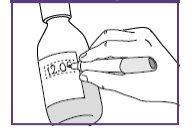
- Напишите дату истечения срока годности только что приготовленной суспензии на этикетке банки.
Дата приготовления+14дней
Представленный пиктограмма является только примером.
- Настройка назначенной дозы с каждой новой синей шприцем
Чтобы избежать передозировки или недозировки, требуется точная доза суспензии.
Прежде чем принимать первую дозу из банки, синяя шприц, прилагаемая к ней, должна быть подготовлена в соответствии с назначенной врачом дозой для вашего ребенка. Эта информация может быть найдена в области коробки, посвященной этому вопросу. Если здесь не введена никакая информация, проконсультируйтесь с врачом или фармацевтом ребенка.
После установки дозы, ту же синюю шприц можно использовать для всех введений, которые необходимо выполнить из приготовленной в шаге 1 банки с суспензией.
Как только доза будет установлена в синей шприце, ее нельзя изменить.
Синяя шприц имеет шкалу (мл). Шкала синей шприцы 1 мл начинается с 0,2 мл. Градуированные метки находятся на приращениях 0,1 мл. Примечание: Не удаляйте съемную этикетку, пока вам не будет указано в Инструкциях по применению. Синяя шприц имеет краснуюкнопку для регулировки объема. Эта кнопка изначально покрыта открывающейся этикеткой. Объем шприцы фиксируется путем нажатия на красную кнопку, что можно выполнить только один раз. Ненажимайте краснуюкнопку, пока вам не будет указано в Инструкциях по применению. Как только вы нажали краснуюкнопку, объем больше не может быть отрегулирован. | |
|
|
Попросите вашего фармацевта или врача предоставить ее. | |
| |
|
Когда вы перемещаете шток плунжера, вы сможете услышать звук "щелчка" для каждого шага регулируемого объема.
Представленный пиктограмма является только примером. Ваш объем может быть другим. Будьте осторожны, нетяните за плунжер дальше, чем объем для введения. Будьте осторожны, ненажимайте на этикетку, когда тянете за плунжер. |
| |
|
Отрегулируйте его соответственно. |
|
Звук щелчка не будет слышен после этого.
|
|
Синяя шприц теперь может быть использована. |
- Введение пероральной суспензии
Следуйте шагам, описанным ниже, для каждой необходимой администрации.
Шаг3.1: Смешивание пероральной суспензии

|
|
|
Повторите шаги а и б. |
Оставьте банку на некоторое время, пока пена не исчезнет. | |
|
Примечание: Большее отверстие, видимое в адаптере, используется для подключения синей шприцы. Поверхность адаптера банки должна быть свободна от жидкости.
Удалите жидкость с помощью чистой бумажной салфетки. |
Шаг3.2: Извлечение необходимой дозы


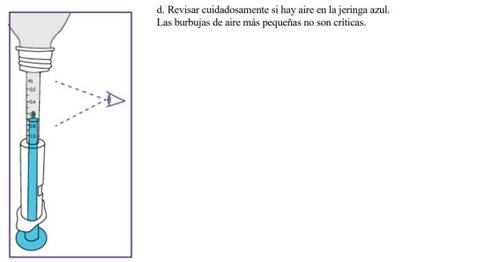

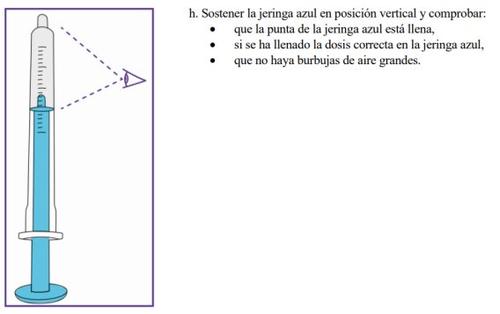

Шаг3.3: Введение назначенной дозы
|
|
|
|
- Очистка и хранение
Синяя шприц должна быть очищена после каждого применения.
Следуйте шагам, указанным ниже, для очистки устройства. В общей сложности, необходимы трицикла очистки, чтобы обеспечить адекватную очистку.
Прежде чем начать, вам понадобятся следующие материалы для шага 4.1:
|
Шаг4.1: Очистка
|
|
|
|
| |
|
Шаг4.2: Хранение
Храните синюю шприц в чистом и сухом месте до следующего использования, например, храните ее в коробке от Xarelto, которая была предоставлена вам.
Держите ее подальше от солнечного света.

Храните суспензию при температуре ниже 30 °C.

- Утилизация
Утилизация неиспользованного лекарства и всех материалов, которые были в контакте с ним, должна быть осуществлена в соответствии с местными правилами.
- Неисправности/Неполадки
Любый серьезный инцидент, связанный с продуктом, должен быть сообщен производителю и соответствующим органам вашей страны.
Инструкции по применению (ИП)
Инструкции по применению
Xarelto 1мг/мл
Банка 250мл с 5,25г гранулята для приготовления пероральной суспензии
Активное фармацевтическое вещество: ривароксабан
Подготовка и введение пероральной суспензии (смешивание гранулята и воды)
Глоссарий и символы
- Гранулят: порошок (поставляется в банке) содержащий активное фармацевтическое вещество.
- Шприц для воды: шприц на 100 мл, используемый для измерения и добавления 100 мл воды в банку с гранулятом Xarelto.
- Суспензия: смесь гранулята и воды (для перорального использования).
- Синяя шприц: шприц с синим плунжером для извлечения и перорального введения Xarelto.
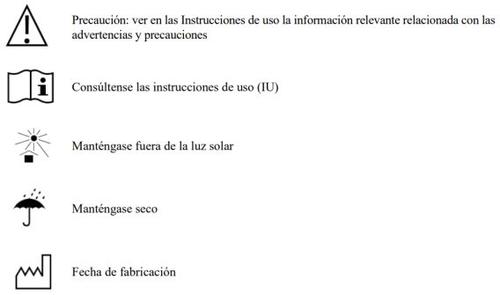
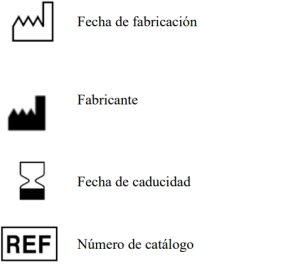
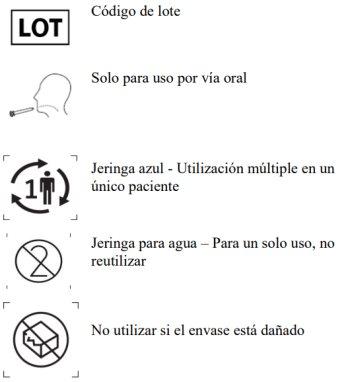
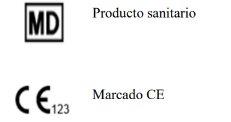
Прежде чем начать
- Внимательно прочитайте все разделы этих Инструкций по применению перед использованием Xarelto впервые и перед введением каждой дозы.
- Посмотрите образовательное видео, доступное через код QRD, включенный в информационную карту для пациента, предоставленную с лекарством.
- Убедитесь, что вы понимаете инструкции перед началом. Если нет, позвоните вашему врачу.
- Для получения более подробной информации о Xarelto, проконсультируйтесь с инструкцией.
Содержимое упаковки
Каждая коробка Xarelto содержит следующие компоненты:
| 1банка с крышкой, защищенной от детей, содержащая гранулят Xarelto |
| 1шприц для воды в упаковке(для одноразового использования) |
| 1адаптер для банки в упаковке |
| 2синие шприцы на 5мл в упаковке 2синие шприцы на 10мл в упаковке |
| 1копия Инструкций по применению (ИП)(этот документ) |
| 1инструкция Предоставляет важную информацию о Xarelto. |
| 1информационная карта для пациента Важная информация в случае чрезвычайной ситуации. Пациент должен носить ее с собой и предъявлять ее каждому врачу или дантисту перед лечением. |

Предупреждения и предосторожности
- Используйте толькопитьевую воду без газа для приготовления суспензии, чтобы избежать образования пузырьков. Это означает, что вы можете использовать
- воду из крана или
- негазированную минеральную воду (без газа)
- Очень важно добавить точное количество воды в гранулят банки, чтобы обеспечить правильную концентрацию Xarelto.
- Используйте шприц для воды, чтобы измерить 100 мл воды, см. ниже для более подробной информации.
- Измерьте с большой осторожностью количество воды, которое вы собираетесь добавить в банку.
- После приготовления суспензию можно использовать в течение 14 дней, если она хранится при комнатной температуре. Убедитесь, что вы написали дату истечения срока годности суспензии (дата приготовления плюс 14 дней) в поле для этого на этикетке банки.
- Нехраните суспензию при температуре выше 30 °C. Незамораживайте. Если суспензия была хранена в холодильнике, дайте ей достичь комнатной температуры перед извлечением соответствующей дозы.
- Встряхивайте суспензию для первоначальной подготовки в течение как минимум 60секунд.
- Встряхивайте суспензию в банке в течение как минимум 10секундперед каждым введением.
- Очень важно, чтобы была введена назначенная доза Xarelto.
- Убедитесь, что вы знаете назначенную дозу и частоту введения. Спросите вашего врача или фармацевта, если вы не знаете назначенную дозу и ее частоту.
- Осторожно отрегулируйте синюю шприц в соответствии с назначенным объемом.
- Введение назначенной дозы с помощью синей шприцы. Следуйте инструкциям вашего врача о частоте ежедневного введения назначенной дозы.
- Проверьте, что нет пузырьков воздуха в синей шприце перед введением пероральной суспензии.
- Если ваш ребенок не принимает повторно всю необходимую дозу или выплевывает часть ее, позвоните врачу вашего ребенка, чтобы узнать, что делать.
- Между дозами держите пероральную суспензию вне поля зрения и досягаемости детей.
- Сохраните Инструкции по применению, чтобы иметь возможность проконсультироваться с ними позже во время использования Xarelto.
Применение Xarelto
- Суспензия Xarelto предназначена только для перорального применения.
- Объем и частота введения Xarelto зависят от веса вашего ребенка, поэтому они будут меняться со временем, если ваш ребенок принимает Xarelto в течение длительного периода.
- Врач вашего ребенка укажет объем правильной дозы и частоту введения.
- Не изменяйте дозу самостоятельно.
- Всегда используйте объем, назначенный врачом вашего ребенка, и убедитесь, что правильная доза и частота введения написаны в специальном поле на外ней части упаковки.
Если эта информация не написана в указанном поле, попросите врача или фармацевта вашего ребенка предоставить соответствующую информацию.
- Следуйте подробным инструкциям по применению, изложенным в следующих разделах.
- Будьте осторожны и следуйте инструкциям, касающимся введения:
- Подготовка пероральной суспензии
Шаг1.1: Подготовка – Все готово
Подготовка суспензии осуществляется один раз для каждого нового контейнера.
Перед подготовкой суспензии:
|
|
|
Неиспользуйте лекарство, если оно уже истекло. |
| |
|
Шаг1.2: Заполнение необходимого объема воды
Каждый раз, когда вы начинаете новый контейнер, используйте только новые материалы, включенные в новый контейнер.
|
Для этого потяните за шток поршня к себе и убедитесь, что отверстие шприца для воды остается под поверхностью воды все время. Это предотвратит образование воздушных пузырей в шприце.
Маленькие воздушные пузыри не являются критическими, но большие являются критическими. Для получения дополнительной информации о том, что делать, см. ниже.
|
Шаг1.3: Добавление воды в гранулы
| |
|
|
|
|
|
Необходимо перелить весь объем воды в банку.
|
Шаг1.4: Установка адаптера и смешивание пероральной суспензии
Адаптер используется для заполнения синего шприца суспензией.
| |
|
|
|
|
|
|
|
|
Не добавляйте больше воды в банку. Суспензия имеет срок годности 14 дней при комнатной температуре. | |
|
Дата приготовления+14дней Показанный пиктограмма является только примером. |
- Настройка назначенной дозы с каждым новым синим шприцем
Для предотвращения передозировки или недозировки требуется точная доза суспензии.
Перед приемом первой дозы из банки синий шприц, прилагаемый к упаковке, должен быть подготовлен в соответствии с дозой, назначенной врачом вашего ребенка. Эта информация может быть найдена в специальной области упаковки. Если здесь нет никакой информации, проконсультируйтесь с врачом или фармацевтом вашего ребенка.
После установки дозы синий шприц можно использовать для всех введений, которые необходимо выполнить из приготовленной банки суспензии в шаге 1.
Как только доза будет установлена в синем шприце, ее нельзя изменить.
Шаг2.1: Выбор подходящего синего шприца
В этом контейнере включены устройства для дозирования разной емкости:
Синие шприцы объемом 5млдля доз от 1млдо 5мл | |
Синие шприцы объемом 10млдля доз от 5млдо 10мл | |
Остальные синие шприцы не нужны.
Примечание: Не удаляйте съемную этикетку, пока вам не будет указано в инструкциях по применению. Синий шприц имеет красную кнопку для регулировки объема. Эта кнопка изначально покрыта откидной этикеткой. Объем шприца устанавливается путем нажатия на красную кнопку, что можно сделать только один раз. Ненажимайте красную кнопку, пока вам не будет указано в инструкциях по применению. Как только красная кнопка будет нажата, объем нельзя будет изменить. | |
Шаг2.2: Настройка необходимой дозы в новом синем шприце Синий шприц имеет шкалу (мл). Шкала синего шприца объемом 5 мл начинается с 1 мл. Метки градуировки расположены с шагом 0,2 мл. Шкала синего шприца объемом 10 мл начинается с 2 мл. Метки градуировки расположены с шагом 0,5 мл. | |
|
Примечание: Используйте синий шприц объемом 10 мл для назначенных доз, превышающих 10 мл, следующим образом: Доза 15 мл: 2 х 7,5 мл из синего шприца Доза 20 мл: 2 х 10 мл из синего шприца |
Попросите фармацевта или врача вашего ребенка предоставить ее. | |
| |
|
Показанный пиктограмма является только примером. Ваш объем может быть другим. Будьте осторожны, нетяните за поршень дальше, чем объем, подлежащий введению. Будьте осторожны, ненажимайте на этикетку при тяге за поршень. |
| |
|
Отрегулируйте его соответствующим образом. |
|
Звук «щелчка» не будет слышен после этого.
|
|
Синий шприц теперь готов к использованию. |
- Введение пероральной суспензии
Следуйте шагам, описанным ниже, для каждой необходимой дозы.
Шаг3.1: Смешивание пероральной суспензии

|
|
|
Повторите шаги а и б. |
Оставьте банку на некоторое время, пока пена не исчезнет. | |
|
Примечание: Большее отверстие, видимое в адаптере, используется для подключения синего шприца. Поверхность адаптера банки должна быть свободна от жидкости.
Удалите жидкость чистым бумажным полотенцем. |
Шаг3.2: Извлечение необходимой дозы
|
|
Шаг3.3: Введение назначенной дозы
|
| ||||||||||||
|
|





